by Bruce Wells | Jun 11, 2025 | Petroleum Technology
Armais Arutunoff designed a downhole centrifugal pump and founded an oilfield service company.
The modern petroleum industry owes a lot to the son of an Armenian soap maker who invented an artificial lift system using an electric motor to drive a centrifugal pump at the well.
With the help of the Phillips Petroleum Company in the 1930s, Armais Sergeevich Arutunoff moved to Bartlesville, Oklahoma, and built the earliest practical downhole electric submersible pump. His invention would enhance oilfield production in wells worldwide.
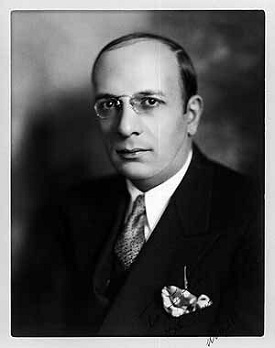
Armais Arutunoff (1893-1978), inventor of the modern electric submersible pump.
A 1936 Tulsa World article described the Arutunoff electric submersible pump (ESP) as “an electric motor with the proportions of a slim fence post which stands on its head at the bottom of a well and kicks oil to the surface with its feet.”
By 1938, an estimated two percent of all oil produced in the United States with artificial lift used an Arutunoff pump (see All Pumped Up – Oilfield Technology).
Early Downhole Patents
The first U.S. patent for an oil-related electric pump arrived in the late 19th century during the growth of electrical power generation, according to a 2014 article in the Journal of Petroleum Technology (JPT).
In 1894, a design by Harry Pickett (patent no. 529,804) used a downhole rotary electric motor with “a Yankee screwdriver device to drive a plunger pump.” Expanding Picket’s concept, Robert Newcomb in 1918 received a patent for his “electro-magnetic engine” driving a reciprocating plunger.
“Heretofore, in very deep wells the rod that is connected to the piston, and generally known as the ‘sucker’ rod, very often breaks on account of its great length and strains imposed thereon in operating the piston,” noted Newcomb in his patent application.
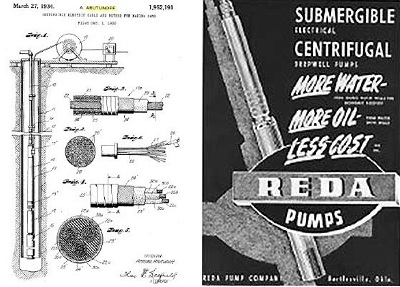
Armais Arutunoff obtained 90 patents, including one in 1934 for an improved well pump and electric cable. At right is a 1951 “submergible” Reda advertisement.
Although several patents followed those of Picket and Newcomb, the Journal reports, “It was not until 1926 that the first patent for a commercial, operatable ESP was issued — to ESP pioneer Armais Arutunoff. The cable used to supply power to the bottomhole unit was also invented by Arutunoff.”
Reda: Russian Electrical Dynamo of Arutunoff
Arutunoff built his first ESP in 1916 in Germany, according to the Oklahoma Historical Society. “Suspended by steel cables, it was dropped down the well casing into oil or water and turned on, creating a suction that would lift the liquid to the surface formation through pipes,” reported OHS historian Dianna Everett.
After immigrating to the United States in 1923, in California Arutunoff could not find financial support for manufacturing his pump design. He moved to Bartlesville, Oklahoma, in 1928 at the urging of a new friend — Frank Phillips, head of Phillips Petroleum Company.
“With Phillips’s backing, he refined his pump for use in oil wells and first successfully demonstrated it in a well in Kansas,” noted Everett. The small company that became Reda Pump manufactured the device.

The name Reda – Russian Electrical Dynamo of Arutunoff – derived from the cable address of the company that Arutunoff originally started in Germany. The inventor would move his family into a Bartlesville home just across the street from Frank Phillips’ mansion.

The founder of Reda Pump once lived in this Bartlesville, Oklahoma, home across from Frank Phillips, whose home today is a museum. Photo courtesy Kathryn Mann, Only in Bartlesville.
A holder of more than 90 patents in the United States, Arutunoff was elected to the Oklahoma Hall of Fame in 1974. “Try as I may, I cannot perform services of such value to repay this wonderful country for granting me sanctuary and the blessings of freedom and citizenship,” Arutunoff said at the time.
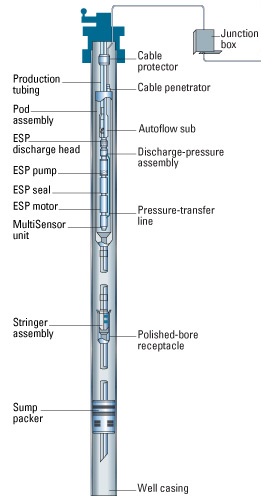
Artificial lift spins the impellers on the pump shaft, putting pressure on the surrounding fluids and forcing them to the surface. Image courtesy Schlumberger.
Arutunoff died in February 1978 in Bartlesville. At the end of the 20th century, Reda ranked as the world’s largest manufacturer of ESP systems. It is now part of Schlumberger.
Armais Sergeevich Arutunoff was born to Armenian parents in Tiflis, part of the Russian Empire, on June 21, 1893. His hometown in the Caucasus Mountains dates back to the 5th Century. His father manufactured soap; his grandfather earned a living as a fur trader.
Centrifugal Pumps
As a young scientist, Arutunoff’s research convinced him that electrical transmission of power could be efficiently applied to oil drilling and improve the production methods he saw in use in the early 1900s in Russia.

Downhole production would require a powerful electric motor, but limitations imposed by the available casing sizes required a new kind of motor.
A small-diameter motor had too little horsepower for the job, Arutunoff discovered. He studied the fundamental laws of electricity seeking answers to how to build a higher horsepower motor exceedingly small in diameter.
By 1916, Arutunoff designed a centrifugal pump to be coupled to the motor for de-watering mines and ships. To develop enough power, the motor needed to run at very high speeds. He successfully designed a centrifugal pump, small in diameter and with stages to achieve high discharge pressure.
Arutunoff designed a motor ingeniously installed below the pump to cool the motor with flow moving up the oil well casing. The entire unit could be suspended in the well on the discharge pipe. The motor, sealed from the well fluid, operated at high speed in the oil.
Although Arutunoff built the first centrifugal pump while living in Germany, he built the first submersible pump and motor in the United States while living in southern California.
Friend of Frank
Arutunoff already had formed Reda to manufacture his idea for electric submersible motors, and after living in Germany, Arutunoff came to the United States with his wife and one-year-old daughter to settle in Michigan, and then Los Angeles.
However, after emigrating to America in 1923, Arutunoff could not find financial support for his downhole production technology. Everyone he approached turned him down, believing his downhole concept impossible under the “laws of electronics.”

No one would consider his inventions until a friend at Phillips Petroleum Company — Frank Phillips — encouraged him to form his own company in Bartlesville. The Arutunoff family moved into a house on the same street as the Phillips home.
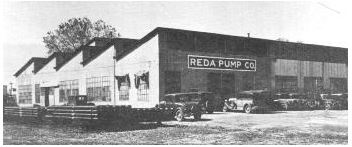
Arutunoff’s manufacturing plant in Bartlesville spread over nine acres, employing hundreds during the Great Depression.
In 1928 Arutunoff moved to Bartlesville, where he formed Bart Manufacturing Company, which changed its name to Reda Pump Company in 1930. He soon demonstrated a working model of an oilfield electric submersible pump.
Upside down Motors
One of his pump-and-motor devices produced oil at well in the El Dorado field near Burns, Kansas — the first equipment of its kind to be used downhole. One reporter telegraphed his editor, “Please rush good pictures showing oil well motors that are upside down.”
By the end of the 1930s, Arutunoff’s company held dozens of patents for industrial equipment, leading to decades of success — and still more patents. His “Electrodrill” aided scientists in penetrating the Antarctic ice cap for the first time in 1967.
Arutunoff oilfield technologies had a significant impact on the petroleum industry — quickly proving crucial to successful production for hundreds of thousands of U.S. oil wells.
Also see Conoco & Phillips Petroleum Museums.
_______________________
Recommended Reading: Artificial Lift-down Hole Pumping Systems (1984); Oil Man: The Story of Frank Phillips and the Birth of Phillips Petroleum
(1984); Oil Man: The Story of Frank Phillips and the Birth of Phillips Petroleum (2016). Your Amazon purchase benefits the American Oil & Gas Historical Society. As an Amazon Associate, AOGHS earns a commission from qualifying purchases.
(2016). Your Amazon purchase benefits the American Oil & Gas Historical Society. As an Amazon Associate, AOGHS earns a commission from qualifying purchases.
_______________________
The American Oil & Gas Historical Society (AOGHS) preserves U.S. petroleum history. Please become an AOGHS annual supporter and help maintain this energy education website and expand historical research. For more information, contact bawells@aoghs.org. © 2025 Bruce A. Wells.
Citation Information – Article Title: “Inventing the Electric Submersible Pump.” Author: Aoghs.org Editors. Website Name: American Oil & Gas Historical Society. URL: https://aoghs.org/technology/electric-submersible-pump-inventor. Last Updated: June 12, 2025. Original Published Date: April 29, 2014.
by Bruce Wells | Apr 7, 2025 | This Week in Petroleum History
April 7, 1902 – Spindletop Boom brings The Texas Company –
Joseph “Buckskin Joe” Cullinan and Arnold Schlaet established The Texas Company in Beaumont to transport and refine oil from Spindletop Hill, a giant oilfield discovered in January 1901. The new company constructed a kerosene refinery in Port Arthur — and discovered an oilfield at Sour Lake Springs, where its Fee No. 3 well produced 5,000 barrels of oil a day in 1903.
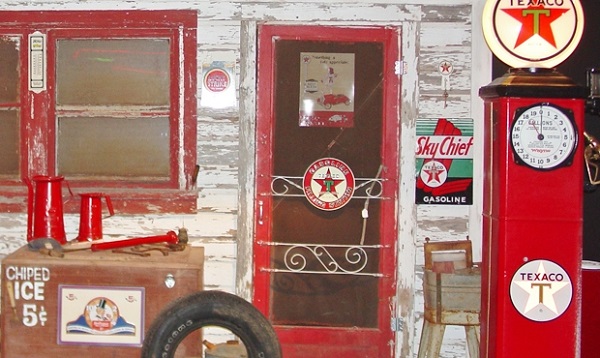
The National Route 66 Museum in Elk City, Oklahoma, preserves the heritage of Texaco, the first petroleum company to market products in all 50 states. Photo by Bruce Wells.
The Texas Company telegraph address at its New York office was “Texaco,” a name soon adopted for its petroleum products. In 1909 a red star with a green capital “T” was trademarked and by 1928 the Texaco brand operated more than 4,000 service stations nationwide. The Texas Company, which officially renamed itself Texaco in 1959, was acquired by Chevron in 2001.
Learn more in Sour Lake produces Texaco.

April 7, 1966 – Cold War Accident boosts Offshore Technology
A robotic technology soon adopted by the offshore petroleum industry was first used to retrieve an atomic bomb. America’s first cable-controlled underwater research vehicle (CURV) attached cables to recover the weapon lost in the Mediterranean Sea.
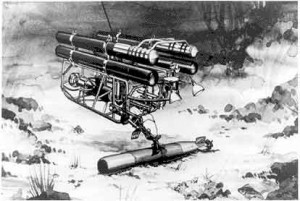
The U.S. Navy in 1966 used its CURV (Cable-Controlled Underwater Recovery Vehicle) to recover a lost nuclear bomb in the Mediterranean.
The 70-kiloton hydrogen bomb, which had been lost when a B-52 crashed off the coast of Spain in January, was safely hoisted from a depth of 2,850 feet.
“It was located and fished up by the most fabulous array of underwater machines ever assembled,” proclaimed Popular Science magazine. During the Cold War, the Navy developed deep-sea technologies that the offshore petroleum industry would adopt and continue to advance.
Learn more in ROV – Swimming Socket Wrench.
April 8, 1929 – Sinclair vs. United States
The Supreme Court unanimously upheld a lower court ruling that Congress had the right to investigate Sinclair Oil founder Harry Sinclair’s personal dealings with Secretary of the Interior Albert Fall regarding the leasing of federal oil reserves. In 1922, Fall had leased land in the Teapot Dome oilfield (Navy Reserve No. 3) to the Mammoth Oil Company, a Sinclair subsidiary. He also leased land in California’s Elk Hills reserve to Edward Doheny, the 1892 discoverer of the Los Angeles Field.
After several trials, proceedings concluded with Doheny being acquitted of conspiracy and Fall convicted of accepting bribes and serving nine months in prison, notes the Federal Judicial Center. He was the first cabinet official to go to prison. Sinclair was acquitted of conspiracy but convicted of contempt of Congress and served six and a half months in prison in 1929.
April 9, 1914 – Ohio Cities Gas Company founded
Beman Dawes and Fletcher Heath organized the Ohio Cities Gas Company in Columbus, Ohio, before building an oil refinery in West Virginia. Ohio Cities Gas acquired Pennsylvania-based Pure Oil Company in 1917 and adopted that name three years later. Pure Oil was founded in Pittsburgh in 1895 by independent oil producers, refiners, and pipeline operators to counter the market dominance of Standard Oil Company.
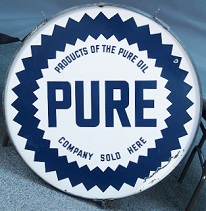
Ohio Cities Gas Company became Pure Oil in 1917.
By producing, refining and selling its products, Pure Oil became the second vertically integrated petroleum company after Standard Oil. Headquartered in a now iconic Chicago skyscraper it built in 1926, the company joined the 100 largest U.S. industrial corporations. It was acquired in 1965 by Union Oil Company of California, now a division of Chevron.
April 9, 1966 – Birthday of Tula’s Golden Driller
A 76-foot statue of an oilfield worker today known as “The Golden Driller” made its debut at the International Petroleum Exposition in Tulsa, Oklahoma. After several refurbishments, the 22-ton statue would contain 2.5 miles of rods and mesh with tons of plaster and concrete — withstanding winds up to 200 mph. A smaller version of Tulsa’s iconic roughneck originally appeared at the 1953 petroleum exposition as a promotion for the Mid-Continent Supply Company of Fort Worth, Texas.
April 10, 1866 – Densmore Brothers patent Railroad Oil Tank Car
James and Amos Densmore of Meadville, Pennsylvania, received a patent for their “Improved Car for Transporting Petroleum,” developed a year earlier in the northwestern Pennsylvania oil regions. Their patent illustrated a simple but sturdy design for securing two re-enforced containers on a typical railroad car.
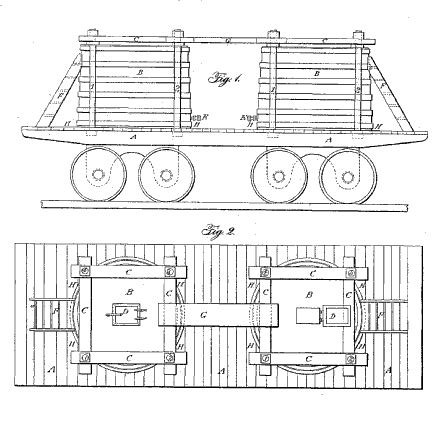
The Densmore dual tank car briefly revolutionized the bulk transportation of oil to market. Hundreds of the twin tank railroad cars were in use by 1866.
Although the Densmore cars were an improvement, they would be replaced by the more practical single, horizontal tank. After leaving the business, Amos Densmore in 1875 invented a new way for arranging “type writing machines” so commonly used letters would not collide — the “Q-W-E-R-T-Y” keyboard. James Densmore’s continued success in oilfields helped finance the start of the Densmore Typewriter Company.
Learn more in Densmore Brothers invent First Oil Tank Car.
April 11, 1957 – Independent Producer William Skelly dies
William Grove Skelly (1878 -1957) died in Tulsa after a long career as an independent producer he began as a 15-year-old tool dresser in early Pennsylvania oilfields. Prior to World War I, he found success in the El Dorado field outside Wichita, Kansas. Skelly incorporated Skelly Oil Company in Tulsa in 1919. In 1923, Skelly organized the first International Petroleum Exposition while serving as president of the Tulsa Chamber of Commerce. Skelly in 1947 helped establish KWGS, Tulsa’s first FM radio station and one of the earliest educational stations in the nation.

April 13, 1974 – Depth Record set in Oklahoma Anadarko Basin
After drilling for 504 days and spending about $7 million, the Bertha Rogers No. 1 well reached a total depth of 31,441 feet (5.95 miles) before being stopped by liquid sulfur. Drilled in Oklahoma’s Anadarko Basin, it held the record of the world’s deepest well for more than a decade.
The GHK Company of Robert Hefner III and partner Lone Star Producing Company believed natural gas reserves resided deep in the Anadarko Basin extending across West-Central Oklahoma and the Texas Panhandle. Their first high-tech drilling attempt began in 1967 and took two years to reach a then record depth of 24,473 feet.
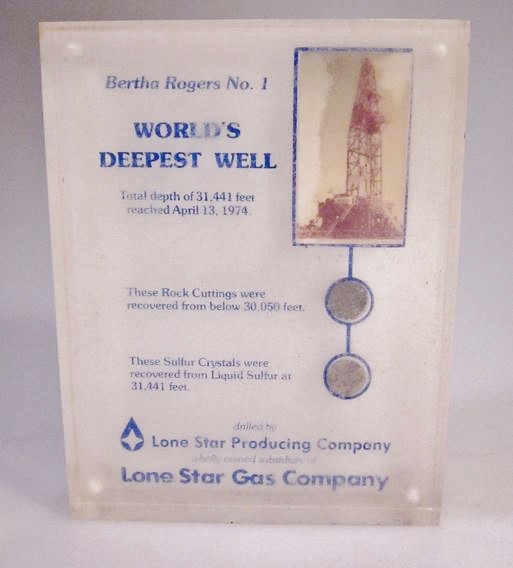
A 1974 souvenir plaque of the Bertha Rogers No. 1 well, which reached almost six miles deep in Oklahoma’s Anadarko Basin.
The 1969 well found plenty of natural gas, according to historian Robert Dorman, but because of federal price controls, “the sale of the gas could not cover the high cost of drilling so deeply – $6.5 million, as opposed to a few hundred thousand dollars for a conventional well.”
The drilling of the Bertha Rogers well began in November 1972 and averaged about 60 feet per day. By April 1974, bottom-hole pressure reached almost 25,000 pounds per square inch with a temperature of 475 degrees. The well’s 1.5 million pounds of casing was the heaviest ever handled by a drilling rig, and it took eight hours for cuttings to reach the surface.
Learn more in Anadarko Basin in Depth.
_______________________
Recommended Reading: The Texaco Story: The First Fifty Years, 1902-1952 (2012); Mapping the Deep: The Extraordinary Story of Ocean Science
(2012); Mapping the Deep: The Extraordinary Story of Ocean Science (2002); Diving & ROV: Commercial Diving offshore (2021); The American Railroad Freight Car (1995); Story of the Typewriter, 1873-1923 (2019); Tulsa Where the Streets Were Paved With Gold – Images of America
(2002); Diving & ROV: Commercial Diving offshore (2021); The American Railroad Freight Car (1995); Story of the Typewriter, 1873-1923 (2019); Tulsa Where the Streets Were Paved With Gold – Images of America (2000); Oil in Oklahoma
(2000); Oil in Oklahoma (1976); History Of Oil Well Drilling
(1976); History Of Oil Well Drilling (2007). Your Amazon purchase benefits the American Oil & Gas Historical Society. As an Amazon Associate, AOGHS earns a commission from qualifying purchases.
(2007). Your Amazon purchase benefits the American Oil & Gas Historical Society. As an Amazon Associate, AOGHS earns a commission from qualifying purchases.
_______________________
The American Oil & Gas Historical Society (AOGHS) preserves U.S. petroleum history. Please become an AOGHS annual supporter and help maintain this energy education website and expand historical research. For more information, contact bawells@aoghs.org. Copyright © 2025 Bruce A. Wells. All rights reserved.
by Bruce Wells | Mar 19, 2025 | Petroleum Pioneers
Featured in newsreels, an Oklahoma City 1930 gusher needed “clever equipment” to be brought under control.
As the worst of the Great Depression approached, an 11-day geyser of Oklahoma “black gold” was irresistible to newspaper editors and newsreel producers in 1930. Crews from NBC Radio rushed to cover the dramatic struggle to control “Wild Mary Sudik,” a blowout in the Oklahoma City oilfield. Repeated attempts to contain the well made headlines.
The Mary Sudik No. 1 well erupted after striking a high-pressure formation about 6,500 feet beneath the farm of Vincent and Mary Sudik near the intersection of Bryant Street and present-day I-240 in southwest Oklahoma City. The Indian Territory Illuminating Oil Company’s well flowed a “volcano of crude oil and natural gas” for 11 days before being brought under control. (more…)
by Bruce Wells | Mar 17, 2025 | This Week in Petroleum History
March 17, 1890 – Sun Oil Company founded –
Established in 1886 by Joseph Pew and Edward Emerson to provide light and heat to Pittsburgh, the Peoples Natural Gas Company expanded into production, becoming the Sun Oil Company of Ohio. The new company acquired leases near Findlay and began “producing petroleum, rock and carbon oil, transporting and storing same, refining, purifying, manufacturing such oil and its various products.”

Sun Oil Company marketed its Sun Oils brand from 1894 to 1920 and its original Sunoco brand from 1920 to 1954.
Sun Oil Company went public in 1925 with its stock appearing for the first time on the New York Stock Exchange. Four years later, a partnership with downhole gyroscope inventor Elmer Sperry created Sperry-Sun Drilling Services.
March 17, 1923 – Discovery leads to Seminole Oil Boom
The Betsy Foster No. 1 well, a 2,800-barrel-a-day oil gusher near Wewoka, county seat of Seminole County, Oklahoma, launched the Seminole area boom. The discovery south of Oklahoma City was followed by others in Cromwell and Bethel (1924), and Earlsboro and Seminole (1926). Thirty-nine separate oilfields would be found in Seminole and Pottawatomie, Okfuskee, Hughes, and Pontotoc counties. Once among the poorest regions in Oklahoma, by 1935 the greater Seminole area became the largest supplier of oil in the world.
Learn more in Seminole Oil Boom.
March 17, 1949 – First Commercial Application of Hydraulic Fracturing
A team from Halliburton and Stanolind companies converged on an oil well about 12 miles east of Duncan, Oklahoma, and performed the first commercial application of hydraulic fracturing.
A 1947 experimental well had fractured a natural gas field in Hugoton, Kansas, and proven the possibility of increased productivity. The technique was developed and patented by Stanolind (later known as Pan American Oil Company) and an exclusive license was issued to Halliburton Company to perform the process. Four years later, the license was extended to all qualified oilfield service companies.
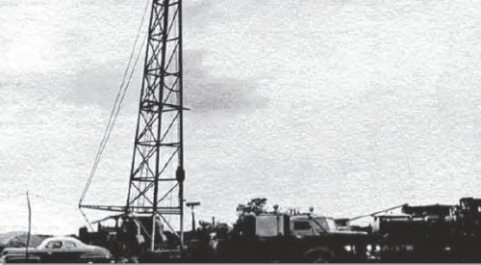
The first commercial hydraulic fracturing job (above) took place in 1949 about 12 miles east of Duncan, Oklahoma. Photo courtesy Halliburton.
“Since that fateful day in 1949, hydraulic fracturing has done more to increase recoverable reserves than any other technique,” proclaimed a Halliburton company spokesman in 2009, adding that more than two million fracturing treatments have been pumped without polluting an aquifer.
Erle P. Halliburton patented an efficient well-cementing technology in 1921 that improved oil production while protecting the environment. The earliest attempts to increase petroleum production by fracturing geologic formations began in the 1860s.
Learn more in Shooters – A ‘Fracking’ History.

March 17, 1949 – “Diamond Glenn” opens Shamrock Hotel
Texas independent producer “Diamond Glenn” McCarthy hosted the grand opening of his $21 million, 18-story, 1,100-room Shamrock Hotel on the outskirts of Houston. McCarthy reportedly spent another $1 million for the hotel’s St. Patrick’s Day opening day gala, including arranging for a 16-car Santa Fe Super Chief train to bring friends from Hollywood.
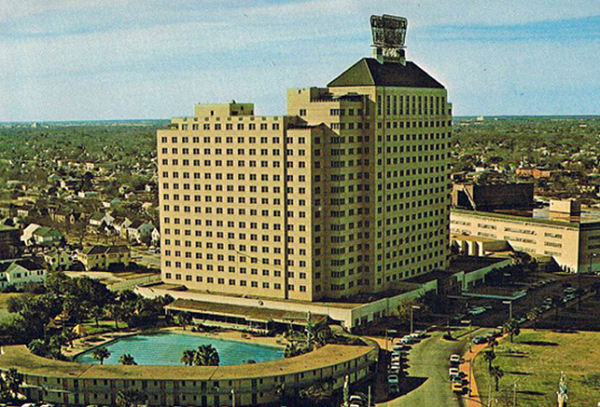
After paying $21 million to construct the Shamrock Hotel, Glenn McCarthy spent another $1 million for its grand opening on St. Patrick’s Day 1949. The 1,100-room Houston hotel was demolished in 1987.
The Texas wildcatter, who had discovered 11 oilfields by 1945, also introduced his own label of bourbon at Shamrock, the largest hotel in the United States at the time. Dubbed Houston’s biggest party, the Shamrock’s debut “made the city of Houston a star overnight,” one newspaper reported.
Learn more in “Diamond Glenn” McCarthy.
March 18, 1937 – New London School Explosion Tragedy
With just minutes left in the school day, a natural gas explosion destroyed the New London High School in Rusk County, Texas. Odorless gas (a residual natural gas called casing-head gas) had leaked into the basement and ignited with an explosion heard four miles away. East Texas oilfield workers — many with children attending the school — rushed to the scene, as did a cub reporter from Dallas, Walter Cronkite.

Roughnecks from the East Texas oilfield rushed to the devastated school and searched for survivors throughout the night. Photo courtesy New London Museum.
Despite desperate rescue efforts, 298 people were killed that day (dozens more later died of injuries). The explosion’s source was later found to be an electric wood-shop sander that sparked odorless gas that had pooled beneath and in the walls of the school. As a result of this disaster, Texas and other states passed laws requiring that natural gas be mixed with a malodorant to give early warning of a gas leak.
Learn more about the tragedy in New London School Explosion.
March 18, 1938 — First Offshore Well drilled off Louisiana
Oil production from a well drilled by Pure Oil and Superior Oil companies helped launch the modern offshore industry. The Creole oilfield in Louisiana’s offshore Cameron Parish was the first discovered in the open waters of the Gulf of Mexico, according to the Louisiana Department of Natural Resources (DNR). “A look back at both the Creole platform and others that followed after World War II provides a glimpse of history in the making,” noted Offshore magazine in 2014.
More offshore wells followed, including the Kerr-McGee drilling platform, Kermac Rig No. 16, which in 1947 became the first offshore rig out of sight of land. By the end of 1949, offshore exploration had discovered 11 oil and natural gas fields.
Learn more in Offshore Oil History.

March 20, 1919 – American Petroleum Institute founded
Tracing its roots to World War I when the petroleum industry and Congress worked together to fuel the war effort, the American Petroleum Institute (API) was founded in New York City. Within two years, the organization had improved an 1876 French scale to measure petroleum density relative to water — a standard later adopted and called API gravity. Based in Washington, D.C. since 1969, API has lobbied on behalf of major oil and natural gas companies while maintaining standards and recommended industry practices.
March 20, 1973 – Pennsylvania Boom Town recognized as Historic
The once-famous oil boom town of Pithole, Pennsylvania, was listed in the National Register of Historic Places. An 1865 oilfield discovery at Pithole Creek launched a drilling boom for the early U.S. petroleum industry, which had begun six years earlier in nearby Titusville. The Pithole field’s production would lead to construction of the nation’s first oil pipeline, but the boom ended after about 500 days.
Learn more in Oil Boom at Pithole Creek.
March 21, 1881 – Earth Scientist becomes USGS Director
President James Garfield appointed John Wesley Powell director of the United States Geological Survey (USGS), a scientific agency established two years earlier. Powell, who led USGS for the next decade, laid the foundation for modern earth science research.
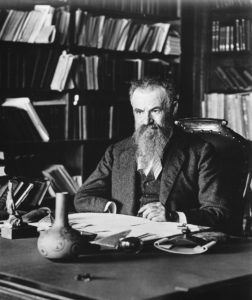
John Wesley Powell at his desk in Washington, D.C., in 1896. Photo courtesy Smithsonian Institution.
Born in 1834 at Mount Morris, New York, Powell was a Union officer during the Civil War, where he lost an arm at the Battle of Shiloh. After the war, he became a respected geologist and expedition leader, organized early surveys in the West, and helped establish USGS in 1879.
Powell advocated the national mapping standards and geodetic system still in use today. In 1884, Powell testified to Congress, “A Government cannot do any scientific work of more value to the people at large than by causing the construction of proper topographic maps of the country.”

March 23, 1858 – First U.S. Oil Exploration Company reorganizes
Investors from New Haven, Connecticut, organized the Seneca Oil Company with $300,000 in capital after purchasing the Titusville leases of the Pennsylvania Rock Oil Company, which had been founded in 1854 by George Bissell.
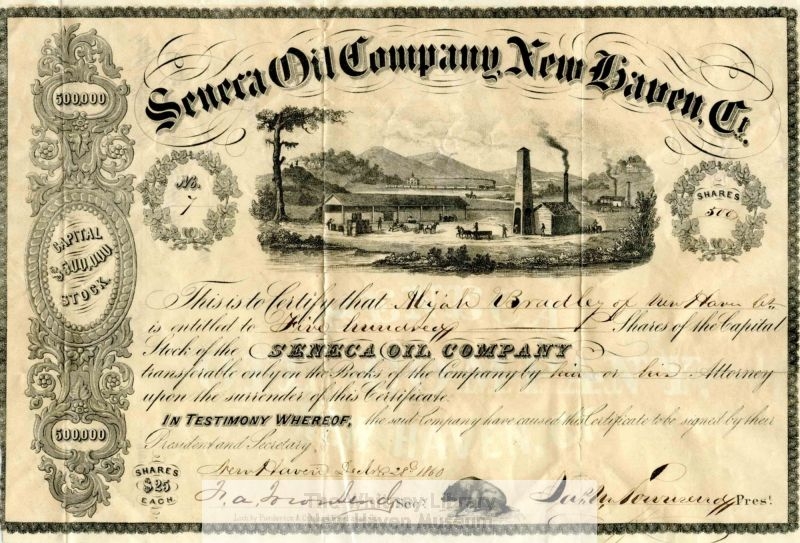
Seneca Oil drilled the first U.S. well. Image courtesy New Haven Museum.
Bissell, who had investigated oil seeps south of Titusville, originated the idea of producing and refining oil to make kerosene lamp fuel. The New Haven investors nevertheless excluded him from the oil exploration company.
Learn more in George Bissell’s Oil Seeps.
_______________________
Recommended Reading: Trek of the Oil Finders: A History of Exploration for Petroleum (1975); A History of the Greater Seminole Oil Field (1981); The Frackers: The Outrageous Inside Story of the New Billionaire Wildcatters
(1981); The Frackers: The Outrageous Inside Story of the New Billionaire Wildcatters  (2014).; The Green and the Black: The Complete Story of the Shale Revolution, the Fight over Fracking, and the Future of Energy
(2014).; The Green and the Black: The Complete Story of the Shale Revolution, the Fight over Fracking, and the Future of Energy (2016); Corduroy Road: The story of Glenn H. McCarthy (1951); A Texas Tragedy: The New London School Explosion
(2016); Corduroy Road: The story of Glenn H. McCarthy (1951); A Texas Tragedy: The New London School Explosion (2012); Offshore Pioneers: Brown & Root and the History of Offshore Oil and Gas
(2012); Offshore Pioneers: Brown & Root and the History of Offshore Oil and Gas (2011); Cherry Run Valley: Plumer, Pithole, and Oil City, Pennsylvania, Images of America
(2011); Cherry Run Valley: Plumer, Pithole, and Oil City, Pennsylvania, Images of America (2000); The Powell Expedition: New Discoveries about John Wesley Powell’s 1869 River Journey
(2000); The Powell Expedition: New Discoveries about John Wesley Powell’s 1869 River Journey (2017); Myth, Legend, Reality: Edwin Laurentine Drake and the Early Oil Industry
(2017); Myth, Legend, Reality: Edwin Laurentine Drake and the Early Oil Industry (2009). Your Amazon purchase benefits the American Oil & Gas Historical Society. As an Amazon Associate, AOGHS earns a commission from qualifying purchases.
(2009). Your Amazon purchase benefits the American Oil & Gas Historical Society. As an Amazon Associate, AOGHS earns a commission from qualifying purchases.
_______________________
The American Oil & Gas Historical Society (AOGHS) preserves U.S. petroleum history. Please become an AOGHS supporter and help maintain this energy education website and expand historical research. For more information, contact bawells@aoghs.org. Copyright © 2025 Bruce A. Wells. All rights reserved.
by Bruce Wells | Mar 3, 2025 | Petroleum Pioneers
Derricks in the Oklahoma City Oilfield in 1930 stood silent for one hour in tribute to Tom Slick.
Once known as “Dry Hole Slick,” wildcatter Thomas B. Slick discovered Oklahoma’s giant Cushing oilfield in 1912 and became known as the “King of the Wildcatters.” Today Cushing is the “Pipeline Crossroads of the World,” the trading hub for oil in North America – and the daily settlement point for prices, including West Texas Intermediate.
The owner of Spurlock Petroleum Company, Alexander Massey, enjoyed great success in the Kansas oilfields after finding oil or natural gas in 25 consecutive wells. In 1904, Massey hired an inexperienced 21-year-old “lease man” named Thomas Baker Slick for a 25 percent share in all the leases the young man could secure. They went to Tryon, Oklahoma, to look for oil.

When Oklahoma’s “King of the Wildcatters” Thomas B. Slick suddenly died from a stroke at age 46 in 1930, the oil derricks in the Oklahoma City field stood silent for one hour in tribute. Photo courtesy Library of Congress.
Massey later recalled that Slick, born in Shippenville, Pennsylvania, in 1883, showed a talent for securing petroleum leases. “Tom would go out and lease most of a territory as yet unproved or doubtful as to oil prospects,” Massey noted. “But he’d spread as clean a bunch of leases before a capitalist as you’d wish to see…He certainly knew what a good oil lease was.”

Spurlock Petroleum Company spudded an exploratory well on the farm of M.C. Teegarden near Tryon. As Slick continued securing leases that eventually totaled more than 27,000 acres, drilling generated excitement in the local newspaper and with other Oklahoma wildcatters.
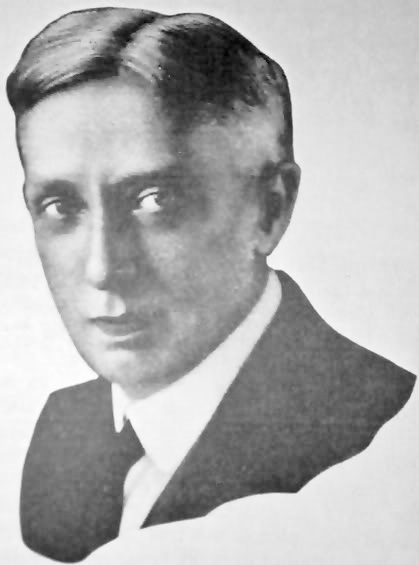
Once known as “Dry Hole Slick” by many, on March 12, 1912, Thomas B. Slick discovered Oklahoma’s giant Cushing oilfield.
However, at a depth of 2,800 feet with no signs of oil, Spurlock Petroleum and owner Massey ran out of money. Tom Slick’s first well was a dry hole. It was the first of many.
Dry Hole Slick
In 1907, after another dry hole near Kendrick, Oklahoma, Slick left the employ of Massey and headed for Chicago, Illinois. Charles B. Shaffer of the Shaffer & Smathers Company hired Slick for $100 per month (and expenses) to find and secure promising oil leases.
Slick traveled to Illinois, Kentucky, western Canada, and eventually, back to Oklahoma. While leasing for Shaffer & Smathers, the young oilman drilled at least ten dry holes in Oklahoma, earning his unenviable nickname, “Dry Hole Slick.”

An example of township leases similar to those negotiated by Tom Slick, from the Atlas of North Central Oklahoma 1917 Oil Fields and Landowners: Oklahoma, M. P. Burke, 1917.
The Bristow Record newspaper reported that Slick, “continues to gamble on wild cat stuff. Few men have stuck to the wildcatting longer and harder than Slick and associates. It is said he has spent $150,000 mostly on dry holes.” Now also known as “Mad Tom” Slick, he tried his luck again just 35 miles down the road, in Cushing.
As “Mad Tom” pursued new leases in 1912, publications like the Cushing Independent encouraged readers to take advantage of leasing opportunities. “Land owners have everything to gain and no risk to themselves in making leases,” the newspaper reported on January 25.

“It costs from $8,000 to $10,000 to put down a single hole,” the newspaper noted. “Unless the promoters can get the leases they want they will not chance their money here, while other localities are eager to give leases and even bonuses in money to get prospecting done.”
The Cushing Democrat added, “We would repeat that we believe it to the best interests of the individuals and all that these leases be granted…And just a word of warning. If you make a lease see that the lessee’s name is not left blank, but that the name of Thomas B. Slick is there.”
Slick and Charles Shaffer spudded a wildcat well on the farm of Frank M. Wheeler in January 1912.
Gusher at Cushing
On March 12, 1912, the Wheeler No. 1 well struck oil, producing about 400 barrels a day from a depth between 2,319 and 2,347 feet. It marked Tom Slick’s first gusher — and a giant oilfield discovery. Slick was so secretive about his find that he even cut the phone line to the Wheeler house to prevent word from spreading.
Knowing that exploration companies and speculators would descend in droves on the town once word got out, Slick protected his investment. Just how he did so would be described by a frustrated competing lease man to his boss:
You see, sir, Slick and Shaffer roped off their well on the Wheeler farm and posted guards and nobody can get near it…I got a call yesterday at the hotel in Cushing from a friend who said they had struck oil out there. A friend of his was listening in on the party line and heard the driller call Tom Slick at the farm where he’s been boarding and said they’d hit.

Pump stations in the Cushing oilfield, 1910-1918, from the Oklahoma Historical Society. More than 50 refineries once operated in the Cushing area about 50 miles west of Tulsa. Pipelines and storage facilities have since made it “the pipeline crossroads of the world.”
Well, I rushed down to the livery stable to get a rig to go out and do some leasing and damned if Slick hadn’t already been there and hired every rig. Not only there, but every other stable in town. They all had the barns locked and the horses out to pasture. There’s 25 rigs for hire in Cushing and he had them all for ten days at $4.50 a day apiece, so you know he really thinks he’s got something.

I went looking for a farm wagon to hire and had to walk three miles. Some other scouts had already gotten the wagons on the first farms I hit. Soon as I got one I beat it back to town to pick up a notary public to carry along with me to get leases — and damned if Slick hadn’t hired every notary in town, too.
Eleven days later the news had spread. As a leasing frenzy grew the Tryon Star reported, “Our old friend Tom Slick the oilman has struck it rich…Slick has been plugging away for several years and has put down several dry holes…He deserves this success and here’s hoping that it will make Tom his millions.”
New King of the Wildcatters
Tom Slick’s No. 1 Wheeler was the discovery well for the prolific Drumright-Cushing oilfield, which produced for the next 35 years, reaching 330,000 barrels every day at its peak.

Oklahoma’s Drumright Historical Society Museum includes the town’s 1915 Santa Fe Railroad Depot, which is listed in the National Register of Historic Places.
Slick was suddenly a very rich man. After his dramatic success in Drumright and Cushing, he began an incredible 18-year streak of discoveries in some of the nation’s most prolific oilfields. Visit the Drumright Historical Society Museum.
Slick was active in the Seminole Area, especially the oilfields of Pioneer, Tonkawa, Papoose, and Seminole. He secured leases and drilled wells that consistently paid off.
Slick’s oil gushers were spectacular: No. 4 Eakin — 10,000 barrels per day; No. 1 Laura Endicott — 4,500 barrels per day; No. 1 Walker — 5,000 barrels per day; No. 1 Franks — 5,000 barrels per day (see Greater Seminole Oil Boom).

Reflecting on his fortunes late in his career, he noted, “If I strike oil everyone calls it Tom Slick’s luck, (but) I call it largely judgment based upon experience. Some folks don’t recognize good luck when they meet it in the middle of the road. So I have been fortunate, or lucky, whichever you call it, but I’ve also done a lot of calling good luck to bring it my way.”

Newly discovered oilfields of the mid-1920s brought prosperity — and traffic jams — to Seminole, Oklahoma. Photo courtesy Oklahoma Oil Museum.
Slick’s leases in Oklahoma, Kansas, and Texas produced millions of barrels of oil. Production from his wells reached 35,000 barrels of oil a day in 1929, and he was proclaimed the largest independent oil operator in the United States with a net worth estimated from $35 million and up to $100 million.
By 1930, in the Oklahoma City field alone, Slick had 45 wells being drilled, more than 30 wells completed, and the capacity to produce 200,000 barrels of crude daily. Across the Mid-Continent, stories of Tom Slick’s business acumen and integrity grew with his fortune.
It was often told how Slick once closed a $100,000 deal for a prized Seminole lease on a street corner. He met the owner on the street and inquired, “What do you want for that lease’ ‘A hundred thousand dollars,’ replied the owner. ‘It’s a sale, bring in your deeds,’ said Slick.”

Thomas B. Slick is among those honored at an outdoor plaza at the Sam Noble Museum, University of Oklahoma, in Norman.
Thomas B. Slick’s death from a stroke in August 1930 at the age of 46 abruptly ended an oilfield career that had supplied America with the petroleum it needed to grow.
“Oil derricks in the Oklahoma City Field stood silent for one hour in tribute,” reported the Oklahoma Historical Society. Slick’s biggest strike came a week after he died when his Campbell No. 1 well in Oklahoma City produced 43,200 barrels of oil per day.
Stories about the “King of the Wildcatters” and his oilfield discoveries would spread across the Mid-Continent. Thomas B. Slick, — no longer known as “Mad Tom” or “Dry Hole Slick” — joined other Oklahoma petroleum industry leaders honored at the Conoco Oil Pioneers of Oklahoma Plaza.

By the end of the 20th century, more than one-half million Oklahoma oil and natural gas wells were drilled since an oilfield discovery at Bartlesville in 1897 (learn more in First Oklahoma Oil Well).
More about Slick and his extraordinary oilfield career can be found in King of the Wildcatters, the Life and Times of Tom Slick, 1883–1930 by Ray Miles, professor of history and dean of the College of Liberal Arts at McNeese State University, Lake Charles, Louisiana.
For example, Miles relates that in 1933, a friend and business partner of the Oklahoma wildcatter was kidnapped and held for ransom. Once released, Charles Urschel assisted the FBI in catching his abductors, including George “Machine Gun” Kelly, who was sentenced to life in Alcatraz.
_______________________
Recommended Reading: King of the Wildcatters, the Life and Times of Tom Slick, 1883–1930. (2004); The Oklahoma City Oil Field in Pictures (2005); The Oklahoma Petroleum Industry
(2005); The Oklahoma Petroleum Industry (1980). Your Amazon purchase benefits the American Oil & Gas Historical Society. As an Amazon Associate, AOGHS earns a commission from qualifying purchases.
(1980). Your Amazon purchase benefits the American Oil & Gas Historical Society. As an Amazon Associate, AOGHS earns a commission from qualifying purchases.
_______________________
The American Oil & Gas Historical Society (AOGHS) preserves U.S. petroleum history. Become an AOGHS annual supporter and help maintain this energy education website and expand historical research. For more information, contact bawells@aoghs.org. © 2025 Bruce A. Wells. All rights reserved.
Citation Information – Article Title: “Oklahoma’s King of the Wildcatters.” Authors: B.A. Wells and K.L. Wells. Website Name: American Oil & Gas Historical Society. URL: https://aoghs.org/petroleum-pioneers/wildcatter-tom-slick. Last Updated: March 1, 2025. Original Published Date: December 1, 2004.




(1984); Oil Man: The Story of Frank Phillips and the Birth of Phillips Petroleum
(2016). Your Amazon purchase benefits the American Oil & Gas Historical Society. As an Amazon Associate, AOGHS earns a commission from qualifying purchases.






















